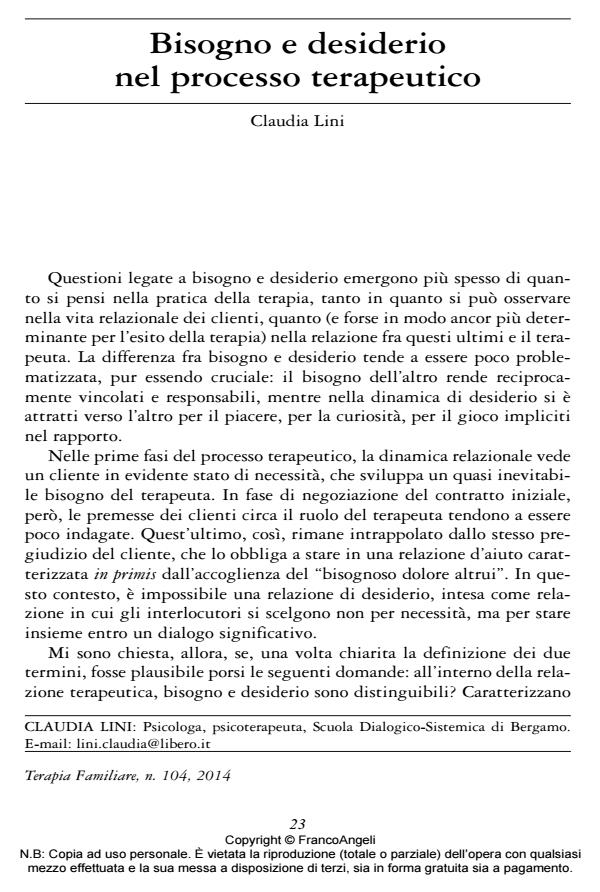Bisogno e desiderio nel processo terapeutico
Journal title TERAPIA FAMILIARE
Author/s Claudia Lini
Publishing Year 2014 Issue 2014/104
Language Italian Pages 24 P. 23-46 File size 162 KB
DOI 10.3280/TF2014-104002
DOI is like a bar code for intellectual property: to have more infomation
click here
Below, you can see the article first page
If you want to buy this article in PDF format, you can do it, following the instructions to buy download credits

FrancoAngeli is member of Publishers International Linking Association, Inc (PILA), a not-for-profit association which run the CrossRef service enabling links to and from online scholarly content.
The distinction between need and change, between feeling a relationship as a necessity, and the aware choice of "being with" somebody, is an important factor in any therapeutic transaction, regarding both the relationships we observe in clients, and the therapeutic relationship itself. The present article aims at examining the dynamics of need and desire within different therapeutic contexts (individual and couple therapy) and their evolution in the course of therapy. The underlying thesis is that a favora ble outcome for therapy requires a shift from need-informed to desire-informed relationships, where the clients’ personal and relational freedom of choice may find its full expression. The desiring client should substitute for the needing patient, anxious and driven to action, so favoring reflection and sharing. The use of the need-desire dichotomy may, more generally, facilitate the awareness of one’s position in the relationship, also helping the client to position herself within her family history (e.g., reflecting on how the relational modes learned in one’s family of origin can shape one’s personal ways of loving). In this way, the therapy halls clients to gain awareness of their own contribution to the creation of their stories, in the here and now of the therapy room, and then to bring such awareness to their everyday lives. The efficacy of the need-desire pair lies probably in their being simple concepts, feelings experienced by all clients in different moments and phases of their lives. Which, therefore, burst into the process of searching for causes, consequences, connections, due to their high evocative value.
Keywords: Need, desire, therapeutic relationship, systemic therapy, therapeutic responsibility, change
Claudia Lini, Bisogno e desiderio nel processo terapeutico in "TERAPIA FAMILIARE" 104/2014, pp 23-46, DOI: 10.3280/TF2014-104002